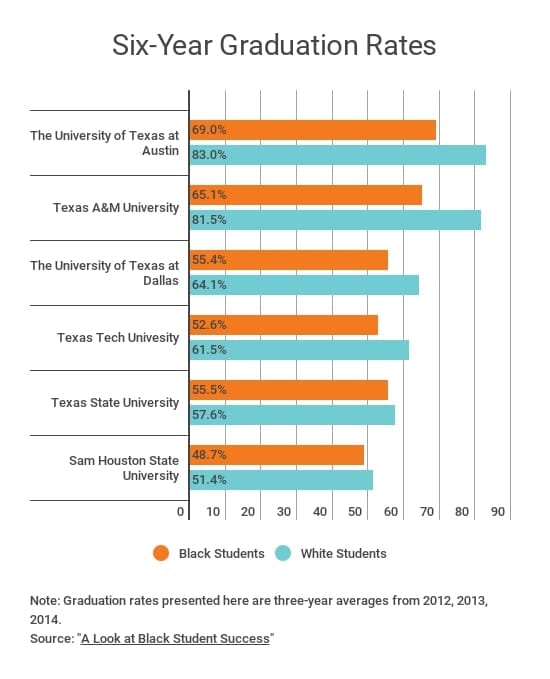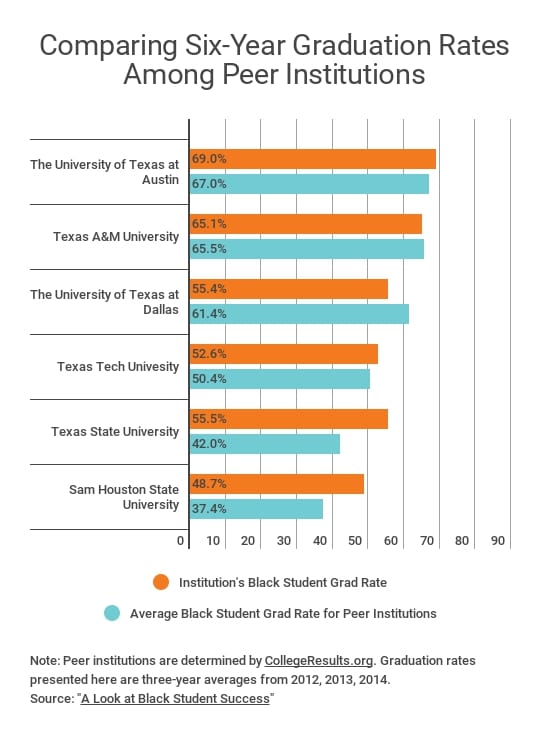Over the last few years, Ed Trust has released several reports on graduation rates and gaps for low-income students and students of color at four-year colleges and universities. In each of these reports, including our most recent, “A Look at Black Student Success,” we included lists of top- and bottom-performing institutions. These lists have received a considerable amount of attention from media, as well as students, faculty, and administrators at colleges and universities.
But what exactly does it mean to be on one of our “good” or “bad” lists? For instance, does it mean that students should flock to the institutions on the good list? Not necessarily.
Take, for example, the list of top-performing institutions for Black students that we identified in our latest report. Those 18 top-performers are institutions whose data show they have a commitment to Black student success because they have:
- Much higher graduation rates for Black students than other similar types of institutions, and
- Relatively small graduation gaps (less than 5 percentage points) between Black and White students.
While these institutions may be doing very well for their Black students compared with their institutional peers, they may not always be the best option for Black students in general. A look at graduation rates for Black students at public universities in Texas illustrates this point. Texas State University and Sam Houston State University made the top-performing list in “A Look at Black Student Success.” However, if you look at other public institutions in Texas, you will see that both the University of Texas at Austin and Texas A&M University have higher graduation rates for Black students than both of the Texas schools on our list (see images below).


Even though UT–Austin and Texas A&M don’t outperform peer institutions on completion rates for Black students or have small equity gaps, they still may be good choices for prospective Black students because they have higher completion rates overall and more resources to spend on students.
Picking a college is a tough decision, and many factors should be considered — such as overall graduation rates, cost, size, location, available majors, campus climate, etc. Our list of top-performers doesn’t take all of that into account. Our web tool, CollegeResults.org, however, does provide a lot of that information for over 2,000 four-year colleges and universities. The College Scorecard provided by the U.S. Department of Education is another useful resource to consider.
We identify institutions that are outperforming their peers and closing gaps between groups to celebrate their success, but also to position them as exemplars from which others can learn. What are they doing that other institutions can model? Is it strong leadership, thoughtful use of data, targeted intervention, and/or effective implementation of evidence-based practices? Our work with colleges and universities throughout the years has shown that institutional best practices such as these are key to improving student success.






